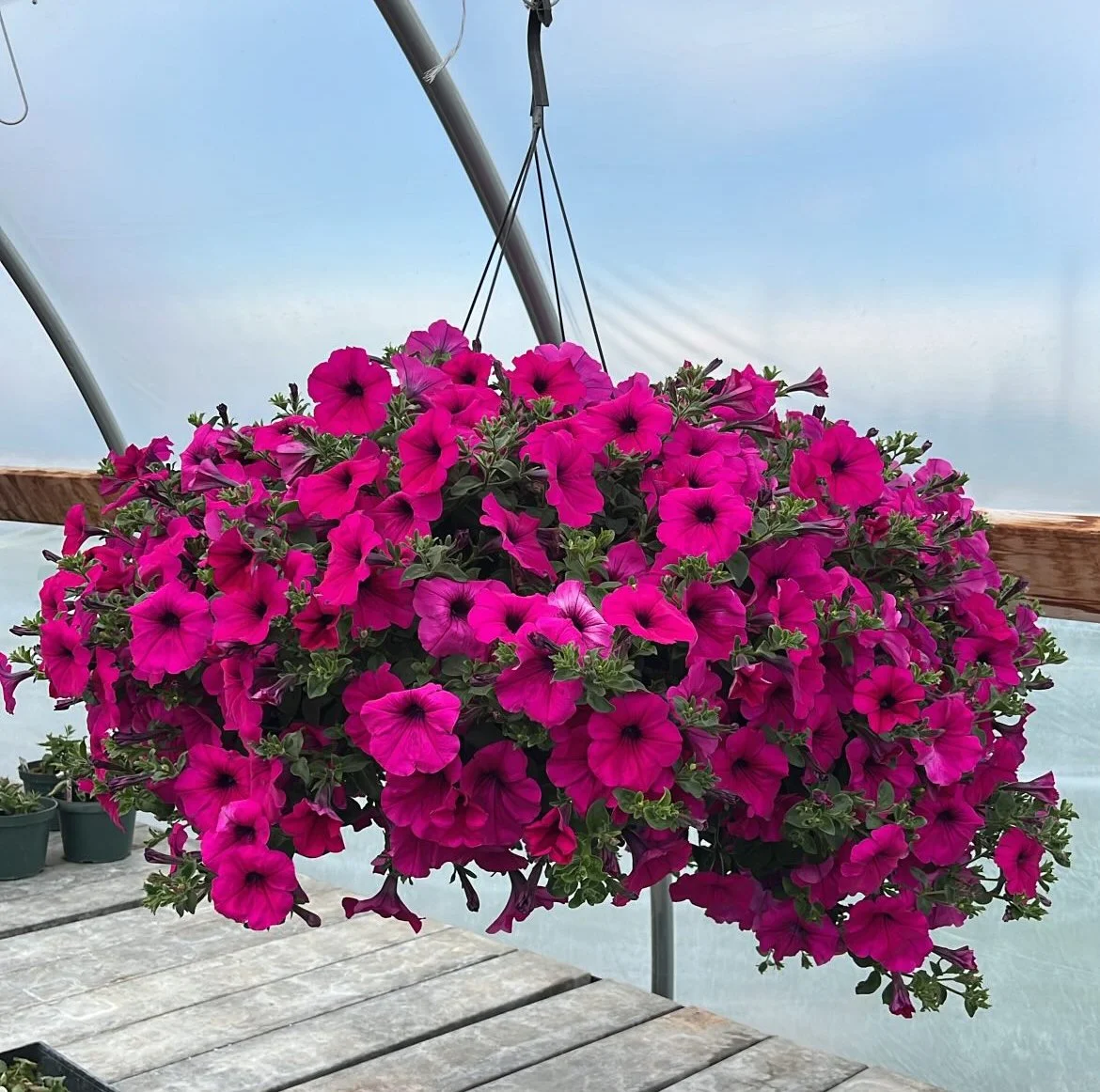How to Build a Beautiful Container Garden in Zone 3
Tips to help your pots thrive all season in Alberta’s prairie climate
There’s something so satisfying about a well-planted pot — full of colour, texture, and life. Whether it’s a basket by your front door or a big planter on the deck, container gardens let you get creative without digging up the yard.
I’ve planted a lot of baskets over the years, and today I want to share a few tips to help you build one that’s not only beautiful, but stays that way through the summer — even here on the prairies.
1. Start with the Right Pot (and Skip the Styrofoam!)
Best containers for good drainage and moisture retention
First things first — choose a container with drainage holes. That part’s non-negotiable. Without drainage, water has nowhere to go, and roots can end up soggy and stressed.
You might’ve heard the old trick about filling the bottom of your pot with styrofoam or empty bottles to save on soil. It does make the pot lighter and cheaper to fill, but here’s the thing — it also makes your pot dry out way too fast. The roots don’t get the depth and moisture they need, and your plants end up struggling.
If you want to improve drainage, you can add an inch or two of gravel to the bottom — but no more than that. The real key is using a good-quality potting mix and a pot that drains well.
Also, go a little bigger if you can. Larger pots hold moisture more evenly, which means less watering and happier plants in the long run.
2. Use the Right Potting Mix for Container Success
Why compost and aged manure make all the difference
Not all potting soil is created equal. A lot of bagged mixes start with peat moss, which is great for drainage — but here’s the catch: if peat moss dries out completely, it’s really hard to re-moisten. Water tends to run off the surface instead of soaking in, and your plants end up thirsty no matter how much you water.
That’s why it’s important to mix in something that helps hold moisture. I always recommend adding some clean, aged compost or sheep manure to your potting mix. It holds water, feeds your plants naturally, and gives your containers a much better start.
Around here, I use alpaca manure from our very own animals — it’s a gentle, slow-release fertilizer that won’t burn your plants. (And yes, the alpacas seem proud of their contribution!)
Some folks add a bit of field soil for extra moisture retention, and while it can help, it also makes your pots heavy and might bring in weed seeds. Personally, I’d focus more on the compost and manure for better moisture control — especially in hanging baskets or sun-soaked planters.
3. Thriller, Filler, Spiller: Easy Plant Combos That Work
Choosing the right plants for sun, shade, and colour
Here’s the planting trick I use for almost every container:
Thriller, filler, spiller. It’s an easy way to build a pot that looks full, balanced, and beautiful from every angle.
🌿 Thriller: Your tall, eye-catching plant — something bold like a spike, ornamental grass, or dahlia.
🌿 Filler: Mid-sized plants that fill in around the base — geraniums, calibrachoa, coleus, marigolds.
🌿 Spiller: Trailing plants that soften the edges — sweet potato vine, lobelia, creeping jenny, trailing petunias.
You don’t have to follow this combo exactly, but it’s a great place to start. The main thing is to choose plants that enjoy the same amount of light — sun-lovers and shade-lovers won’t be happy in the same pot.
When it comes to colour, anything goes! Go wild with joyful mixes — purples, oranges, reds, chartreuse — or keep things soft and classy with a monochromatic combo, like all white flowers with silver foliage. There’s no wrong way to do it — just plant what makes you smile.
4. Watering Containers the Right Way
How often to water and how to tell if it’s enough
Watering is one of the biggest factors in how well your container garden does — and it can be a bit of a balancing act.
In warm weather, containers dry out fast. Hanging baskets and small pots might need watering every single day, especially if they’re in full sun. Bigger pots hold moisture longer, but even those can dry out quickly when the wind picks up.
The best way to tell if your pot needs water?
Stick your finger in the soil. If it’s dry about an inch down, it’s time to water.
When you do water, water deeply — enough that it runs out the bottom. That encourages roots to grow down rather than staying shallow and thirsty. Avoid just giving a light sprinkle across the top — it doesn’t reach where the roots need it.
Morning is the best time to water, especially on hot days. It gives plants time to soak it up before the heat kicks in, and helps prevent mildew and stress.
If you want to give your pots a little extra help, try adding a thin layer of natural mulch on top of the soil — something like bark chips, straw, or dried grass clippings. It helps keep the moisture in and the roots cool, which can be a game-changer during heat waves.
5. Keep Your Containers Blooming All Summer
Fertilizer tips, deadheading, and how to refresh tired pots
Once your container is planted and thriving, the goal is to keep it looking good right through summer. With a little regular care, you can keep those blooms coming and your plants happy for months.
🌸 Deadhead regularly
Many annuals (like petunias, marigolds, and geraniums) will bloom more if you remove the spent flowers. Just pinch or snip them off — it tells the plant to keep flowering instead of going to seed.
🌿 Feed, feed, feed!
Containers don’t have access to nutrients like in-ground plants. I recommend adding a slow-release fertilizer when you plant, and then feeding once or twice a week with a water-soluble fertilizer. This keeps the blooms coming and helps the plant bounce back after stress.
💧 Stay on top of watering
Thirsty plants don’t bloom well — enough said!
🪴 Mid-season refresh
If your pot starts to look tired in July or August, don’t be afraid to trim it back, add a fresh bloomer, or top it up with compost. A little refresh can go a long way.
Final Thoughts
Container gardening doesn’t have to be complicated. Start with a good pot, give your plants what they need, and most of all — have fun with it. Play with colours, try something new, and don’t worry if it’s not perfect. That’s part of the joy of growing things.
And if you ever have a question, or just want help building a beautiful pot — come see me. I’m always happy to help.
Happy Gardening,
Heidi




